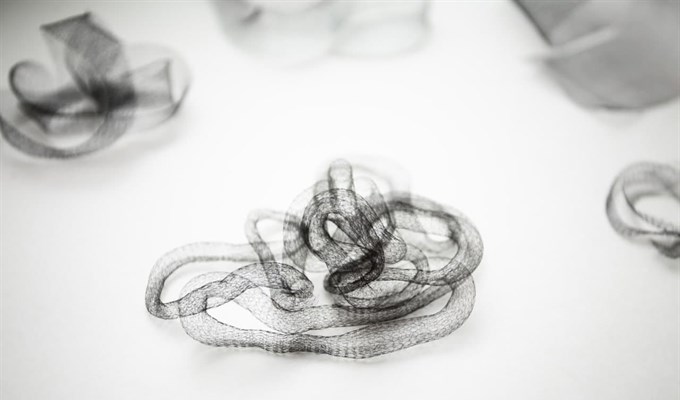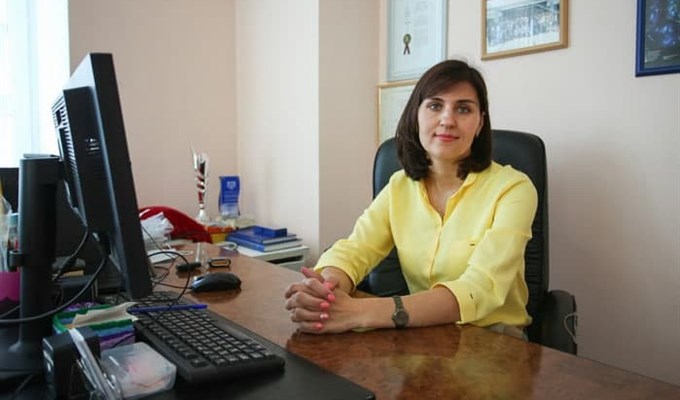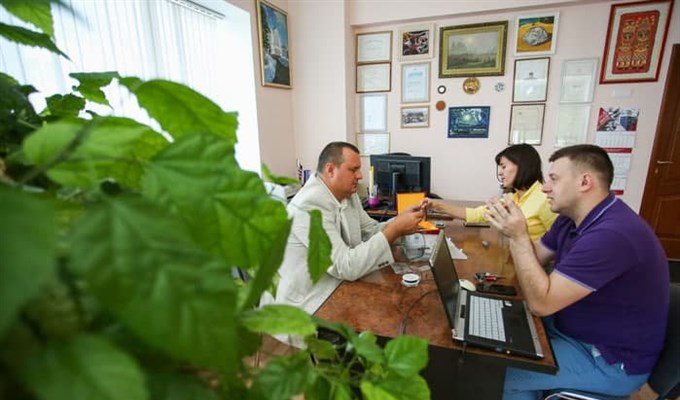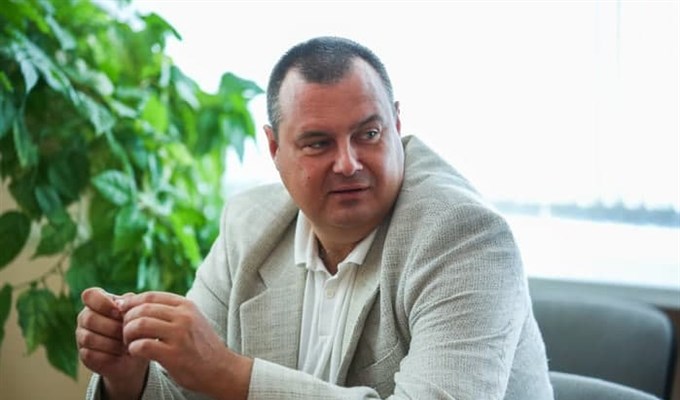TOMSK, Aug 16 – RIA Tomsk. Tomsk implants made of titanium nickelide can be fitted to a patient abroad: as part of a megagrant led by Professor Alex Volinsky from the USA, research will be conducted for their wide application. How this topic attracted a famous scientist to TSU and why only in Siberia he began to be proud of his homeland - is in the RIA Tomsk material.
Lifetime is life
When a foreign body gets inside the human body, the system of recognizing "friend-or-foe" immediately kicks in and the process of "expelling" the stranger begins. Even around a small splinter there is an inflammation focus, let alone implants, which doctors use to replace, for example, fragments of bone or joints. This is why making them as biocompatible as possible is a task that leading material science teams around the world are working on.
Alex Volinsky, Professor of the Department of Mechanical Engineering at the University of South Florida and a specialist in the surface engineering of biomaterials, came to Tomsk to lead the TSU megagrant on just this topic. He shows several metal pieces - one rough, one smooth, and one woven in the form of a mesh. This could be part of a bone, this a new vertebra, this a reconstructed fragment of a vessel or tendon...
"They're all made from titanium nickelide, a shape memory material. It's not toxic like, say, cobalt alloys. It adapts well - unlike polymer products. Finally it has unique mechanical properties - it is more difficult to destroy it than any other material, even in an aggressive corrosive environment," says Volinsky.
© предоставила пресс-служба Томского госуниверситета
The structure of the implant is determined by the technology used to make it. For example, a highly porous bone replacement material is produced by SHS synthesis. Due to its surface properties, biological tissue can easily grow into it and the body recognizes the implant as "its own".
Ekaterina Marchenko, Head of the Laboratory of Medical Alloys and Implants with Shape Memory of the TSU Siberian Physical-Technical Institute (SPTI) adds that in order for an implant to function successfully in the body it must be rheologically compatible with the biological tissues. That is to say, it should behave just like them. To be just as "hardy".
"The alloys developed in the laboratory are superelastic, they relax internal stresses thanks to reversible martensite transformations. For example, we have shown in in vivo experiments that porous titanium nickelide can withstand more than 15 million cycles of bending and tensile loading.
Due to the viscoelastic hysteresis behaviour, the implant deforms consistently with the living biological tissues into which it is integrated. The high cyclic endurance allows the implants made of porous titanium nickelide alloy to function safely for life," explains Ekaterina Marchenko.
© предоставила пресс-служба Томского госуниверситета
Ekaterina Marchenko, Head of the Laboratory of Medical Alloys and Implants with Shape Memory of the TSU Siberian Physical-Technical Institute (SPTI).
According to her, research on titanium nickelide alloys at TSU was started by Victor Gunter 30 years ago. Numerous human surgeries have already been performed, for instance Tomsk surgeons installed such implants in patients who had lost vast bone fragments due to oncology. And their colleagues in Krasnoyarsk replaced the titanium plates in the patient's spine with the Tomsk material because the dynamic load caused them to start deteriorating and poisoning the tissues with decay products.
But there is one "but": the rheological compatibility criteria have not been formulated by scientists yet, and the choice of alloys for a particular operation is based on the subjective experience of experts. A team of physicists, material scientists and biologists, together with Professor Volinsky, will develop objective criteria.
Breakthrough for the homeland
Alex Volinsky, as a renowned scientist in the field of materials science, often receives letters from younger colleagues asking them to support a particular project that is applying for a grant. One such a letter came from Tomsk.
"The topic is interesting, the team had many publications on it - for example, back in 1999, TSU professor Yuri Chumlyakov published an article on titanium nickelide in Acta Materialia, the leading scientific journal in our field. And I agreed. Usually nothing comes of it, but, to my surprise, we won a government megagrant. It is very prestigious, there are only 43 of them in Russia. I am glad and grateful that my experience and knowledge are finally being used in my home country," says Volinsky.
© предоставила пресс-служба Томского госуниверситета
The megagrant funding is 90 million rubles for three years, a large sum even by American standards.
One of the conditions of the megagrant is precisely that the research is headed by a foreign scientist with a high Hirsch and citation index, who must spend at least 90 days a year with his or her research team. This summer, Alex A. Volinsky came to Tomsk for the first time. He hadn't been to Russia for ten years.
"Frankly speaking, I was pleasantly surprised how good it is here - what a comfortable environment and delicious food, how friendly Siberians are, what a high level of scientific research. Because people who "left the Soviet Union" (I choose this expression) still think that everything is bad in Russia - the country is only shown in a negative light on television in America. I publish photos in emigrant groups of 20,000 people, and I've even got some haters!" - smiles the scientist.
He himself is a classic example of "getting out". In 1989, as part of a group of Moscow English special school went on exchange to the United States. In 1994, while already a student at the Moscow Aviation Institute of Technology, he went to Pennsylvania State University as exchange student. In 1996, when he felt that science was falling apart in Russia, he decided to leave for good and entered graduate school at the University of Minnesota.
"My area of interest is at the interface between materials science and mechanics. In 2000, I did my Ph.D. in adhesion (i.e. surface adhesion) of thin metal films to ceramic substrates.
I did my internship at Motorola - my work was in demand when everyone was switching from aluminum contacts in microprocessors to copper ones, and methods for measuring adhesion were needed. We developed them in my boss Bill Gerberich's group, so after my internship I got a job at Motorola," says Alex Volinsky.
In 2003 he went to work at the University of South Florida in the Department of Mechanical Engineering. And in 2010 he decided to go to his homeland...
"Once every seven years I was entitled to a year's holiday, I came to Moscow and tried to get a job. It didn't work out! I was introduced to some really cool managers from state corporations, they looked at my CV and said: "We have never had specialists like that... And we don't need them! I told myself then that I wouldn't go back. But now I am really proud of Russia - that such projects are developing here and the state is really investing in science," says the scientist.
There is something to tell the world
Alex A. Volinsky is convinced: Russia has always produced good science. But for the rest of the world, the indicator of the effectiveness of science is, firstly, the number of scientific publications, and secondly, and most importantly, the number of references to them. According to these indicators, Russia is still losing out - it is about at the bottom of the world's top 10. And the leader is China.
© предоставила пресс-служба Томского госуниверситета
"I published my first article in Acta Materialia on the topic of my Ph.D. thesis. In 2004, I received a letter from Web of Science that in one month it had received the highest number of citations in the field of materials science - it was cited 689 times," says Volinsky.
"China started publishing articles in scientific journals on an industrial scale 15-20 years ago. In 2020, it had more articles than America. In Russia, the process started 5 to 10 years ago. Foreign journals have strict requirements for the quality and formatting of articles, and my 25 years of experience in publishing in foreign scientific literature will come in handy in Tomsk," says Alex Volinsky.
True, he adds, giving only the number of articles as a scholar's grade is "pure accounting, not real life":
"In America, it is considered normal if a professor publishes two articles a year. The cost of publishing one article is about 100,000 thousand dollars. We have a megagrant plan of 5-7 articles a year, which is a lot: to produce scientific research, process the data, publish - it is a complex and lengthy cycle."
On the other hand, Tomsk scientists have a high chance to be published in highly ranking journals: in spite of the fact that titanium nickelide is a rather old science, the Web of Science database contains only 300 articles on it. This may be because it is a semi-commercial story - the research is mainly carried out by industrial companies.
"Our first articles under the megagrant will be those written in collaboration with doctors who use the material for reconstructive facial surgery (in particular, with Dr. Evgeny Bogdanovich Topolnitsky, a leading oncology surgeon from SSMU).
Surgeries were preceded by animal studies, which, by the way, is a big plus of Russian science: in the States it is very difficult to do them - permission to experiment with mice in my university has to wait for about two years!" - notes Volinsky.
Next, he says, the team will conduct and publish basic research:
"Our main task is to describe the fundamental principles of interaction between materials and tissues. We will develop scientific criteria by which a surgeon will be able to assess which specific tissue with what properties is suitable for this material. The output should be recommendations for use based on biomechanical similarity. This will allow the development to be disseminated as widely as possible, and not only in Russia.
For example, a year ago in Israel I met Dr. Sal who is restoring the face of an Arab who lost part of his facial bone due to a gunshot wound. For two years he has been putting in hard plates, they have not taken root, the patient is suffering... I sent the doctor our article on implants made of titanium nickelide, he was interested, maybe we could cooperate. This is really world-class level."